In today's ever-changing retail landscape, having a robust emergency preparedness plan is not just a requirement but a vital necessity. Whether it's a natural disaster, a sudden supply chain disruption, or unforeseen challenges, being prepared can make all the difference in ensuring the safety of your employees and customers. This article will guide you through creating an effective retail emergency preparedness plan tailored to your specific needs and challenges. So, grab a cup of coffee and let's dive into essential strategies that can fortify your business's resilience!
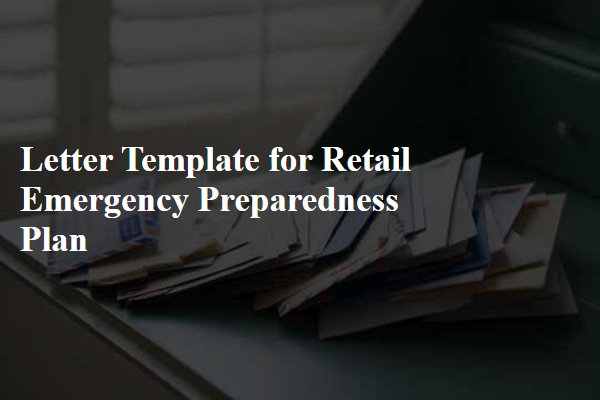
Executive Summary
An effective retail emergency preparedness plan outlines proactive measures for responding to unforeseen events, ensuring employee safety and minimizing business disruption. The plan encompasses a range of potential emergencies, from natural disasters such as hurricanes and earthquakes to man-made threats including security breaches or cyber-attacks. Each section specifies protocols for evacuation procedures in retail locations, designated assembly areas, and communication strategies to inform both staff and customers. Key components include training sessions for employees on emergency response best practices, regular drills to test readiness, and partnerships with local emergency services in cities like Los Angeles and New York. This summary highlights the importance of maintaining operational continuity and safeguarding assets during emergencies, ultimately fostering a resilient retail environment that prioritizes the safety of all stakeholders.
Risk Assessment and Analysis
Risk assessment and analysis are crucial components in developing a retail emergency preparedness plan, especially in high-traffic areas like shopping malls or urban centers. Identifying potential hazards, such as severe weather events (hurricanes, tornadoes, or floods) with historical data indicating increased frequency in certain regions, is vital. Evaluating internal risks including fire hazards (electrical faults, flammable materials) and security threats (theft, violence) enhances readiness. External factors like pandemics (COVID-19) require specialized protocols for maintaining public health and safety. Assessing vulnerabilities in physical infrastructure, such as emergency exits and fire suppression systems, ensures compliance with local regulations (National Fire Protection Association standards). Employee training programs on emergency response, first aid, and evacuation procedures are essential for effective crisis management. Regular drills simulate real-life scenarios, improving reaction times and minimizing chaos during actual emergencies. Documenting these assessments and strategies not only safeguards human lives but also protects business continuity and reputation during unforeseen events.
Emergency Response Procedures
In a retail environment, an Emergency Response Plan (ERP) ensures the safety of employees and customers during critical incidents. This plan outlines procedures for various emergencies, such as fire (with evacuation routes marked and fire extinguishers strategically located), medical emergencies (including designated first aid officers and easily accessible first aid kits), and severe weather (with guidelines for sheltering in place during tornado warnings issued by the National Weather Service). Employees must receive regular training sessions on the ERP, ensuring that everyone is familiar with the procedures and can act swiftly. Detailed signage should be displayed throughout the store to guide individuals during emergencies. Incident reports must be documented following any emergency event to analyze and improve response effectiveness. Regular drills (scheduled quarterly) reinforce preparedness, allowing staff to practice their roles under simulated conditions and ensuring community safety within the retail space.
Communication Plan
A retail emergency preparedness plan requires a robust communication strategy to ensure all stakeholders are informed during a crisis. The plan should outline key channels like SMS alerts, email notifications, and social media updates for real-time information dissemination. Identify primary contacts, including store managers, district managers, and corporate communication personnel, ensuring a clear chain of command. Regularly scheduled drills or training (quarterly recommended) can reinforce communication protocols, ensuring every employee understands their role in crisis communication. Utilize tools like mobile apps or cloud-based platforms to enhance message broadcasting efficiency. Review and update contact lists biannually to include any new staff or changes in roles. Commitment to timely communication can greatly reduce confusion and ensure a coordinated response during emergencies.
Recovery and Continuity Plan
A well-structured recovery and continuity plan for retail operations ensures swift response during emergencies, mitigating financial losses and safeguarding inventory. The plan should outline specific protocols for various emergencies, such as natural disasters (hurricanes, earthquakes), technological failures (system crashes, data breaches), and health crises (pandemics). It must designate key personnel within the organization, emphasizing their roles and responsibilities during each phase of the emergency response. Details on communication strategies are crucial, including procedures for informing employees, customers, and stakeholders, potentially utilizing platforms like SMS alerts or social media updates. The plan should include a detailed inventory assessment process to determine damage and recovery needs, as well as a list of essential suppliers or backup resources for restocking merchandise post-disruption. Additionally, executing regular training drills for staff enhances preparedness, creating familiarity with emergency procedures, and reinforcing a culture of safety. A clear timeline for recovery efforts should be established, enabling the retail operation to resume normal functions swiftly, thus minimizing disruption to service and maintaining customer trust.

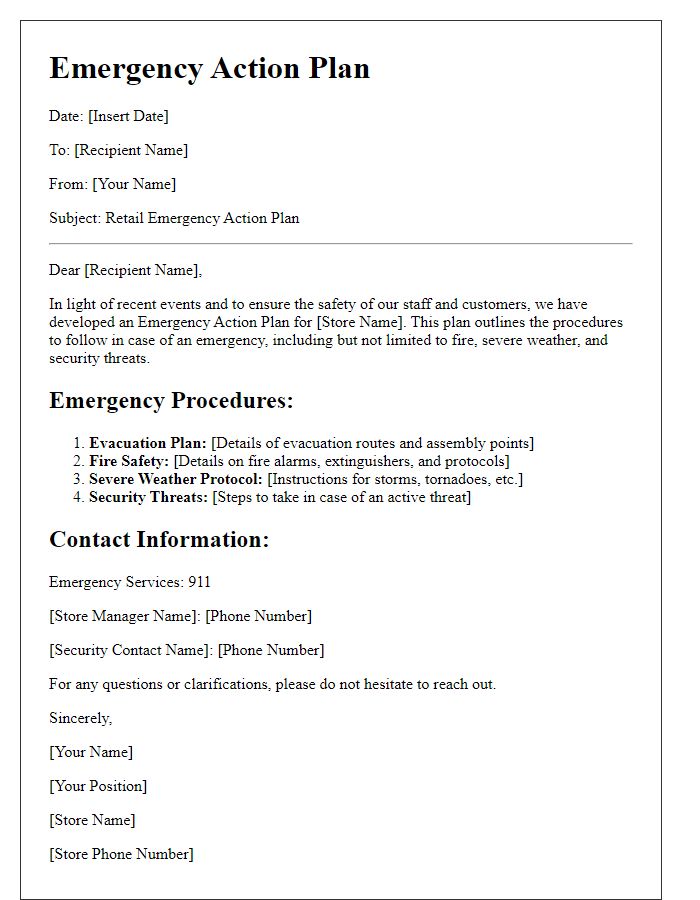
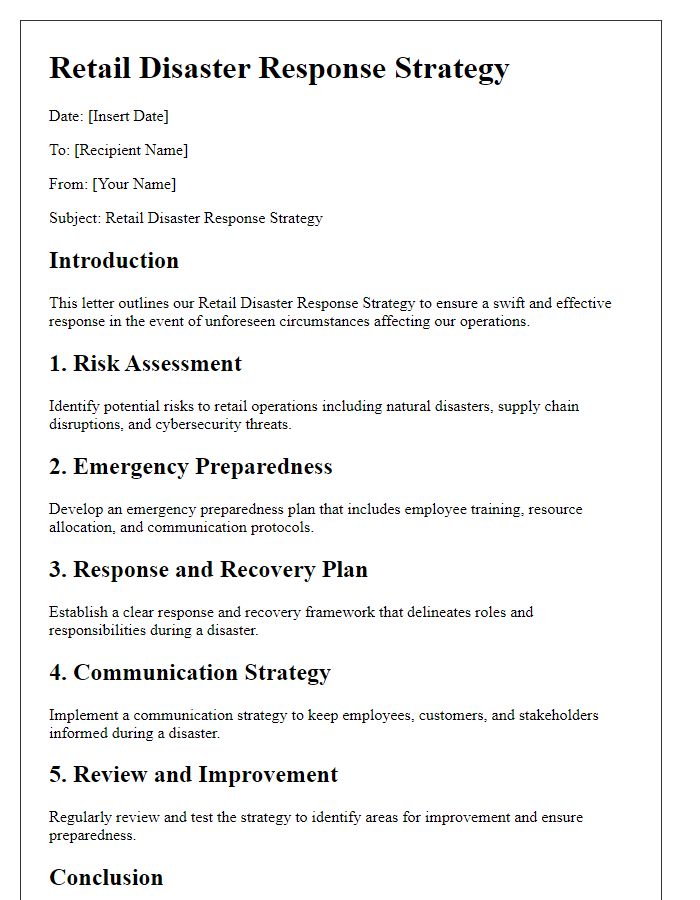
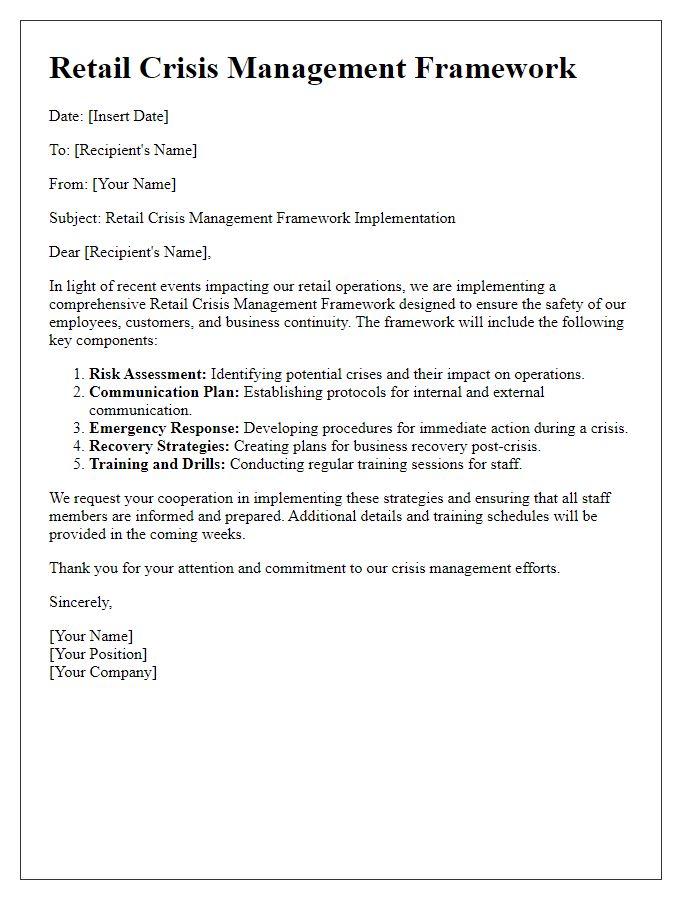
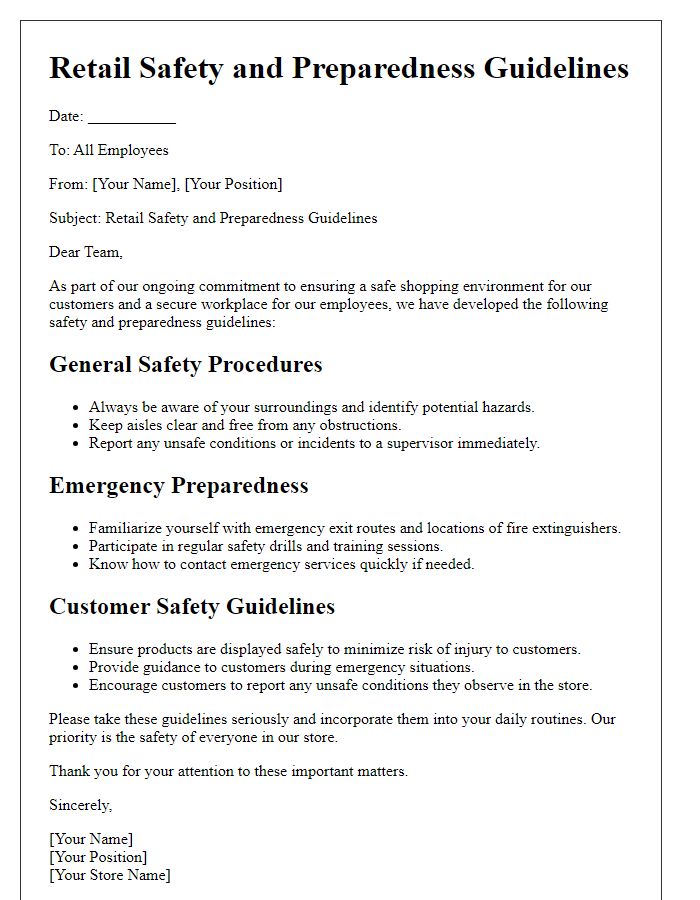
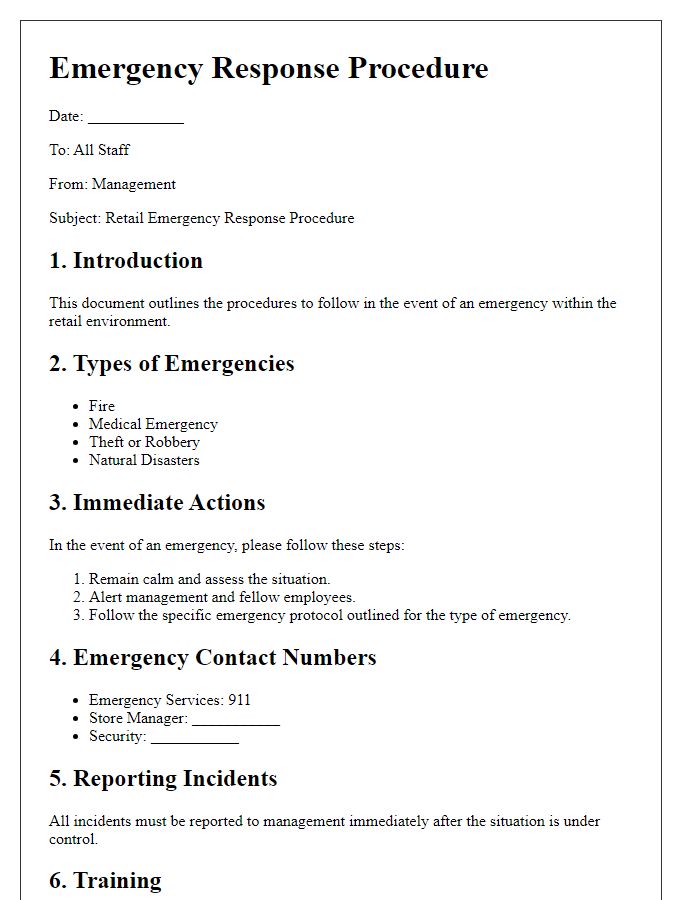
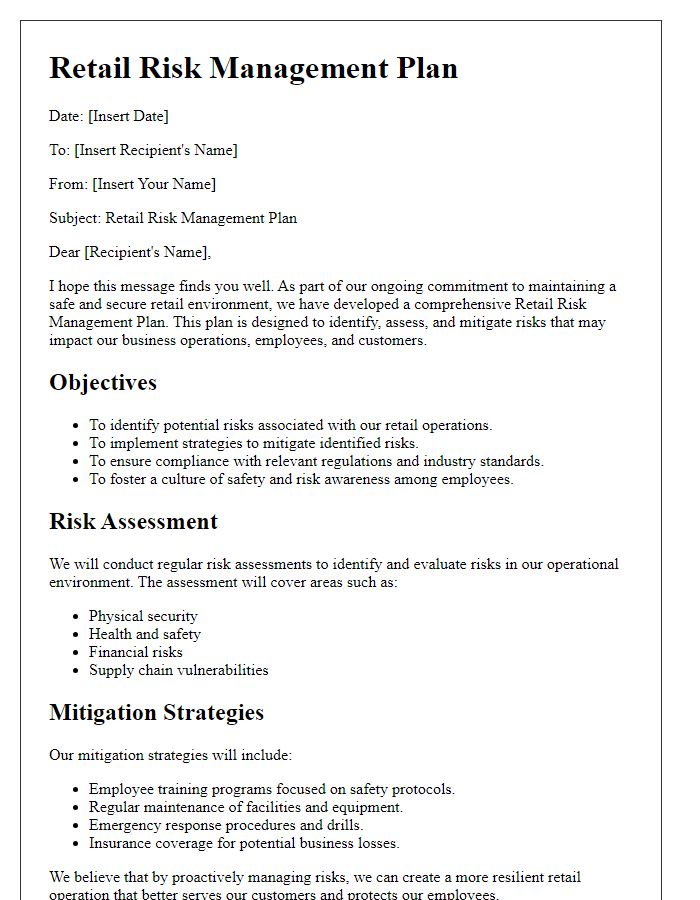
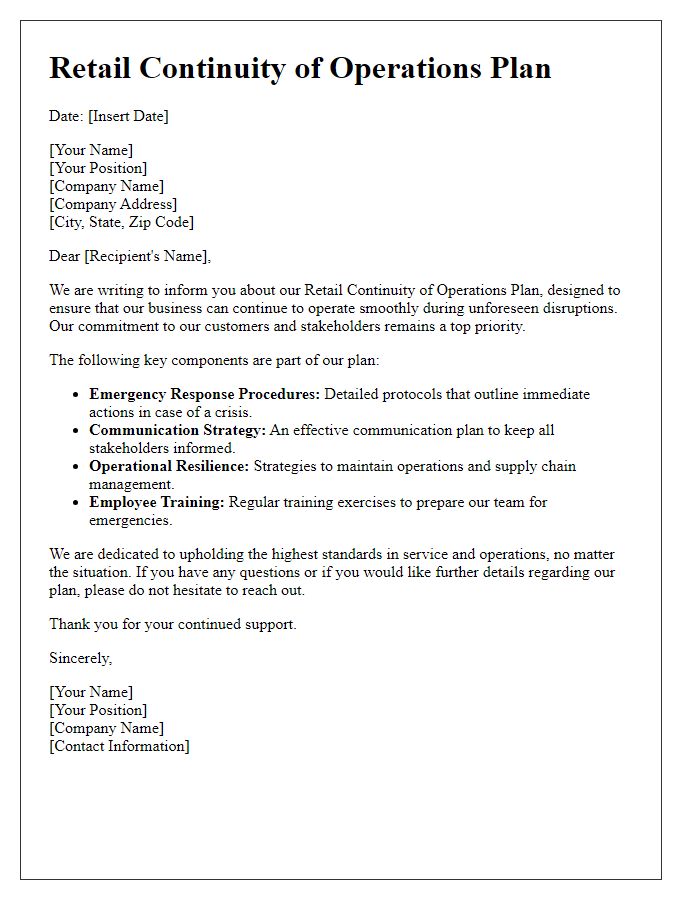
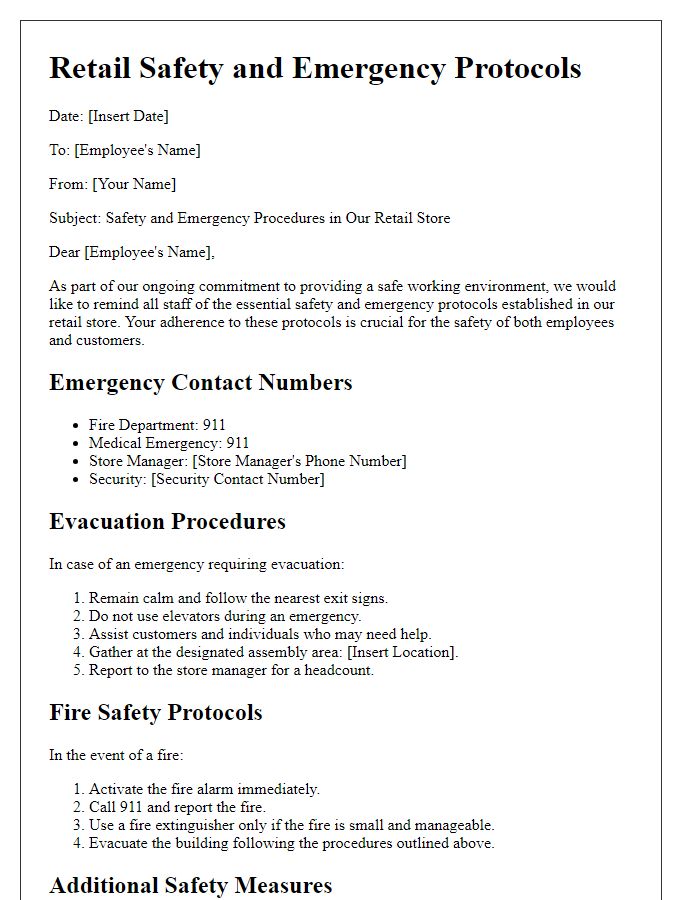
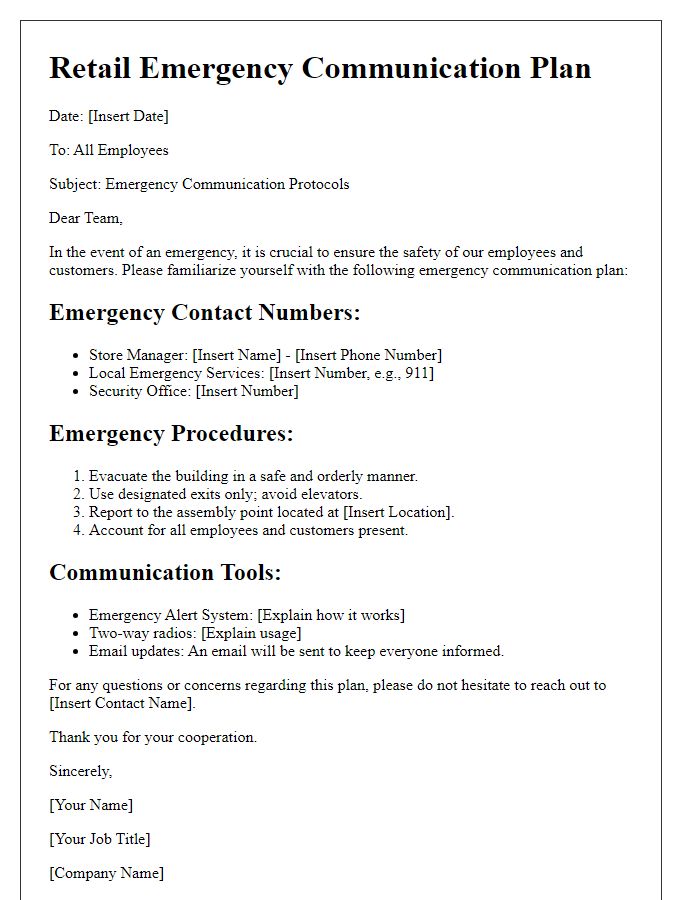
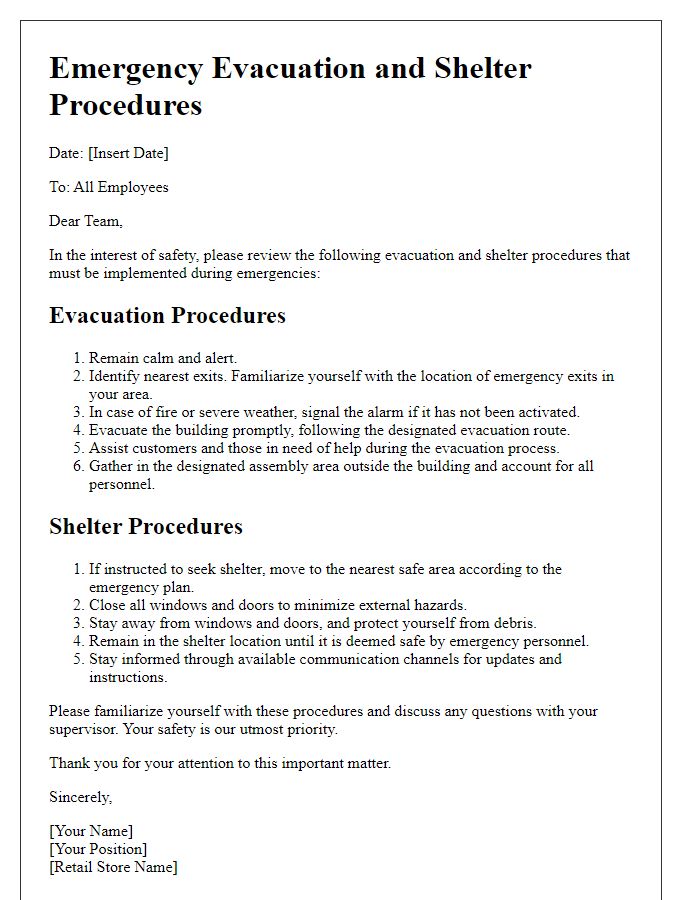


Comments